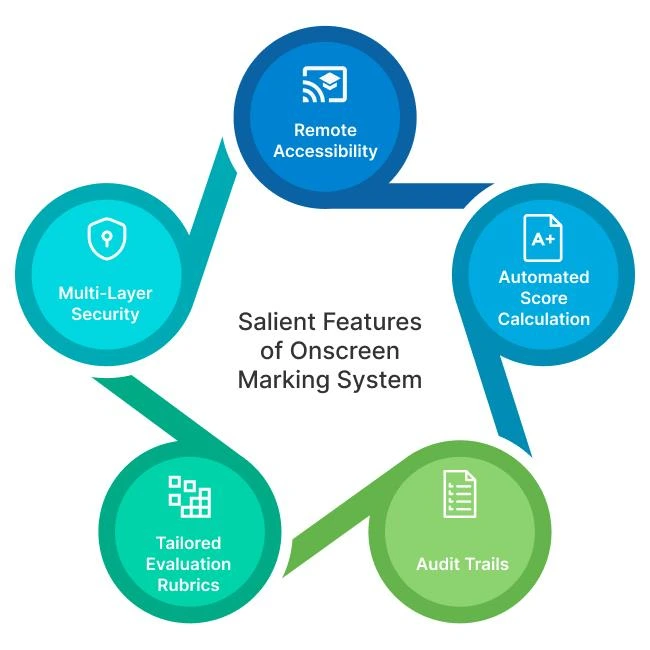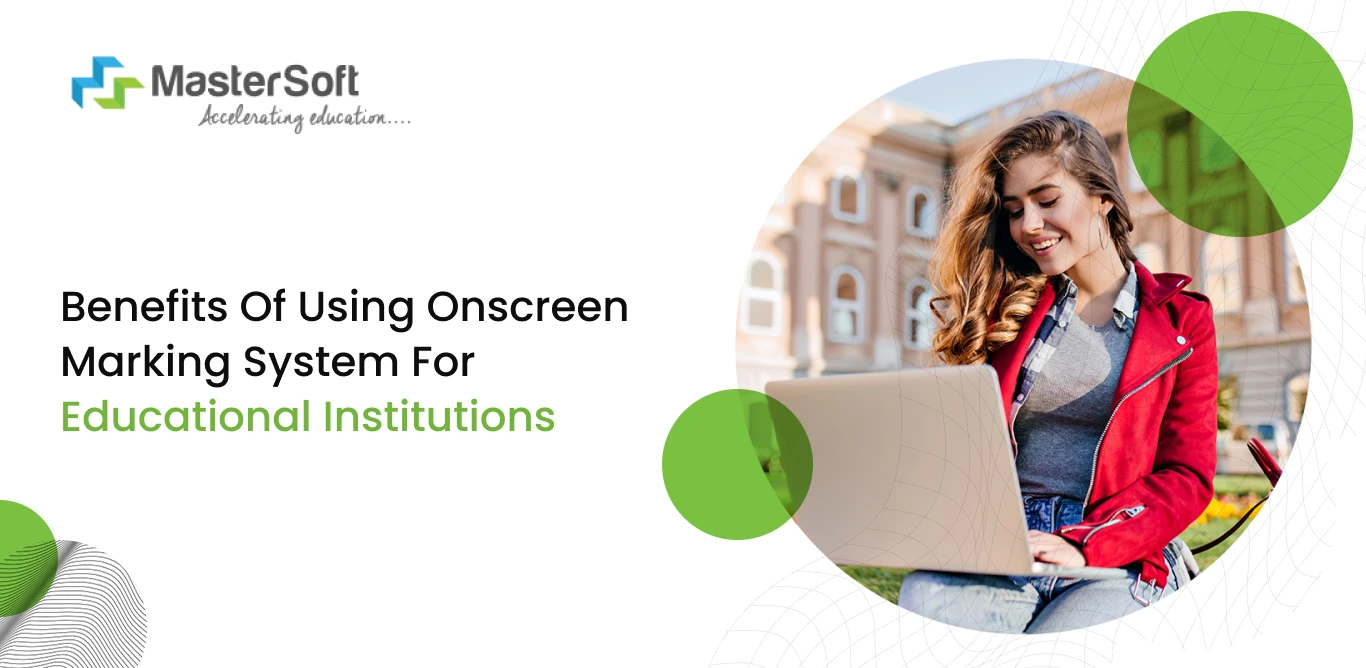30, Dec 2024
The education sector is evolving rapidly and adapting to technological advancements. One such aspect is the evaluation process. The traditional answer sheet handling and evaluation is a tiresome process. It also involves a lot of logistics costs as well. This entire tedious process might result in delays and hence degrade the quality of education rendered to the students. This is where the onscreen marking system helps.
It offers a smarter and efficient alternative to the manual process of paper correction. By leveraging this system, educational institutions can save a great deal of time and cost. In this blog, we will understand this digital evaluation system, learn its benefits and the way we can implement it to stay ahead in the digital age.
Understanding Onscreen Marking System
An onscreen marking system is a digital solution to the tedious traditional paper correction. It evaluates the papers electronically. The system uses the technologies of image processing, cloud computing and data encryption. Let us see the process with which it works.
How to Implement a Digital Evaluation System in Your College?
Process of Onscreen Marking System
1. Scanning:
High resolution scanners are used to scan the physical answer sheets and converted into digital formats. Then, it is securely uploaded in the system.
2. Anonymization:
The information of the students like the names and roll numbers are masked for an unbiased evaluation. Later, they are assigned to the evaluators depending on their expertise.
3. Evaluation:
For objective type questions, the evaluation is automated. Whereas for the subjective ones, the evaluators assess the digital sheets and evaluate accordingly.
4. Result:
Once the evaluation is completed, scores are compiled automatically. This reduces the chances of manual errors. A detailed evaluation report is uploaded for all the stakeholders to see.

Salient Features of Onscreen Marking System
1. Remote Accessibility
The evaluators can assess the answer sheets anytime, anywhere.
2. Automated Score Calculation
The system can automatically compute marks.
3. Audit Trails
A comprehensive tracking system ensures accountability.
4. Tailored Evaluation Rubrics
Educational institutes can set their own evaluation criteria.
5. Multi-Layer Security
Features like access control and data encryption make the marking system secure.
Major Benefits of Onscreen Marking System
The digital evaluation system offers a wide range of benefits to educational institutions. By replacing traditional evaluation systems with digital ones, the education system can improve multifolds. Let us see a few of the major advantages.
Speed and Efficiency
With traditional paper corrections, the process of grading can be time-consuming which might further lead to delays. However, with onscreen marking systems, the teachers can easily access the answer sheets and use the automated features like auto-sum calculation for speeding up the process. Also, examiners can grade the papers anytime, anywhere, reducing the logistic costs.
Accuracy and Fairness
Human error is inevitable in case of manual evaluation. On the other hand, digital evaluation improves accuracy by offering standardized grading criteria. This is consistent for multiple examiners. Built-in tools help in ensuring detailed evaluation with more clarity. Cross-checking minimizes errors, and centralized evaluation reduces biases.
Security and Confidentiality
Protecting exam and student data ensures the integrity of the institution. The digital marking system emphasizes end-to-end encryption. Other features like role-based access control, anonymity, and audit trails further aid in security and confidentiality, improving the overall evaluation experience.
What Is CCE: Importance Of Continuous And Comprehensive Evaluation (CCE)
Cost-Effectiveness
Implementing digital solutions for evaluation results in major cost savings. The logistic expenses are reduced significantly as the evaluators need not carry bundles of papers. The need for physical storage of the papers is reduced as everything is uploaded and available on the cloud.
Remote Access
Since the papers are digitally available, OMS provides the flexibility to evaluate the papers from anywhere. It improves work-life balance, enhancing productivity. Organizations can improve the quality of evaluation by engaging external examiners who cannot be present physically.
Environmental Sustainability
Awareness in environmental conservation has led educational institutions to adopt sustainable methods. The OMS reduces paper usage significantly, contributing to less cutting down of trees for paper. Furthermore, this reduces the carbon footprint and promotes an eco-friendly approach.
Comprehensive Reporting
One of the prime benefits of the OMS is its ability to generate detailed reports. Performance analysis, identification of trends, and patterns help educators customize their teaching strategies.
Regulatory Compliance
Educational institutions need to adhere to strict regulatory standards for exam evaluation. An ideal OMS helps in secure, traceable, and auditable records. It also ensures compliance with data protection laws and offers features that align with accreditation requirements.
Overcoming the Challenges
While the OMS has a range of benefits, institutions may face certain challenges during implementation. Let us look at some of the challenges and how they can be overcome.
Problem: Initial Setup Cost
Solution: Cloud-based options that offer scalable, subscription-based pricing models can significantly reduce costs.
Problem: Resistance to Change
Solution: Comprehensive training programs that help break the glass ceiling of traditional methods while showcasing the benefits of OMS.
Problem: Data Security and Privacy
Solution: Implementing a system that offers end-to-end encryption, role-based access control, and regular audits can ensure data security and privacy.
How to Implement a Digital Evaluation System in Your College?
Problem: Technical Issues
Solution: Choosing a system that offers 24*7 technical support.
How to Implement Onscreen Marking System
Implementing OMS in an educational institution requires thorough planning for a smooth transition. The process begins with assessing the institutional needs and selecting the suitable OMS that aligns with the goals and objectives. Next, digitize the answer scripts by using high-quality scanners to convert the physical copies into the digital ones. Once scanned, the digital formats are uploaded on the centralized system. Training faculty and staff for the proper usage of OMS is a must. The evaluators can evaluate the papers in detail and upload the results on the portal for the reference of the parents and the students.
Final Thoughts
The implementation of an ideal OMS is a one time investment but can ensure long-term benefits. It improves the overall operational efficiency. The remote accessibility helps in providing flexibility to the evaluators to evaluate the papers anytime and anywhere. Additionally, the cost-effectiveness and the accuracy of the system proves beneficial for the educational institutions.
MasterSoft helps you digitize all the processes related to evaluation enhancing the overall efficiency of the organization. Get in touch with us to know more!
Simplify your faculty hiring process with MasterSoft’s faculty management system.
Mobile: 08448010216
Email: janki.somani@iitms.co.in











